I grew up half an hour from a blue-ribbon tailwater trout fishery. The Gray Reef section of the North Platte River in central Wyoming, where hundreds of anglers flock each week to wade and float, was just a short drive out of town.
I could work a full day and still reel in half a dozen feisty rainbows before dark. But then we moved.
We love our new home in the prairie, don’t get me wrong. But half an hour from a tail water it is not. Driving hours each weekend to our favorite spots works fine -- our after-work fishing options, however, require a little creativity.
On a recent birthday, after a week of work and little outdoor time, we decided it was time to try something different: fly fishing prairie potholes.
The Western high plains and Midwest are dotted with ponds, small lakes and reservoirs. Not the big ones that host high dollar walleye and bass tournaments filled with glittery boats and fast motors. I’m talking about small lakes. Spits of water, really, largely forgotten except by the ranchers who might use them in the summer for irrigation.
More Like This
They’re often filled with warm and cold water species from small mouth bass to tiger muskie to brown trout.
“A lot of fly fishermen go out in their float tubes,” said Paul Mavrakis, fisheries supervisor for the Wyoming Game and Fish’s Sheridan region. “You feel like you’re fishing most of the pond when they’re little things like that. You don’t get the feeling you’re in the wrong spot.”
Now many respectable fly fishermen don’t like to talk about chasing warm water species in stocked waters. But before you judge, hear me out. In places like eastern Wyoming or central North Dakota, it might be your only option. And it’s not like you’re chasing the stocking truck around.
Many eastern Wyoming lakes were stocked in the ‘50s either illegally by someone in the area or by Game and Fish biologists. Since then, the bass, perch, sunfish and walleye have since sustained themselves.
More than 100 similar ponds and lakes dot a stretch of North Dakota from the northwest edge of the state down to the southeast along what is called the Missouri Coteau, said Randy Hiltner, North Dakota’s Northeast District Fisheries Supervisor at Devils Lake.
During dry years, the ponds and lakes were more like duck slews. But since the early ‘90s when the recent wet cycle began, many have become fishable lakes.
“In most cases we have to initially stock a perch or a pike, but after they reach maturity they often produce young on their own with natural reproduction,” he said. “A lot of these have fathead minnow populations, which means fish like walleye will do really well.”
The lakes are out in open country. And sometimes the wind blows pretty strong. But they can also be a great time for anglers looking for something a little different. Hiltner went so far as to call them some of the state’s better fishing lakes.
That’s how we ended up on a puddle in the prairie called Turner Reservoir one summer night after work.
It didn’t look like much. Cattails lined about 4-acres of water with a nearby pit toilet and concrete boat ramp. We blew up our float tubes – an anomaly in big-boat walleye country – tied little frog pattern poppers to the ends of our lines and pushed out into the water.

After 10 minutes of casting toward the banks, the first largemouth bass leapt out for my popper. It was far from a beast – about 1 pound at best. But I wasn’t going to argue.
We spent the next hour paddling around casting at a continuous flurry of rising bass to a cacophony of croaking frogs. Fish were everywhere. I may have even giggled.
By dark, the classic orange and red sunset faded, we loaded the float tubes back in the truck. Half an hour later we were home.
The pond won’t replace the North Platte River full of rainbows and browns or high mountain streams teaming with brookies, but it was also more fun than expected.
And the next time we feel the mid-week fishing itch with little time to drive, we know exactly where to go.




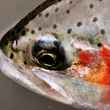
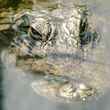

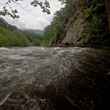




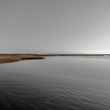



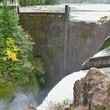




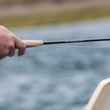
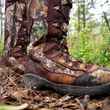



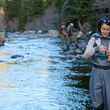
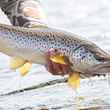

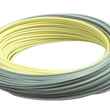
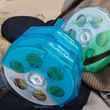
Comments